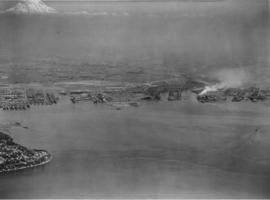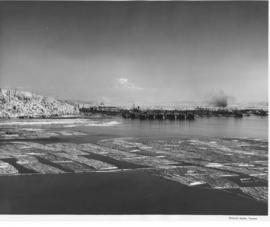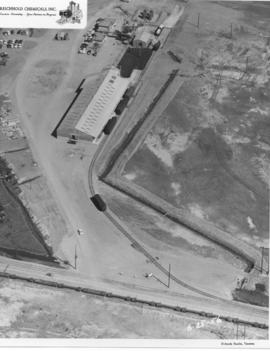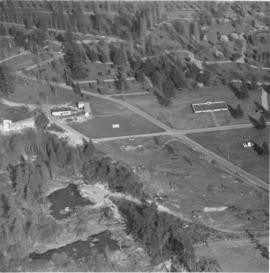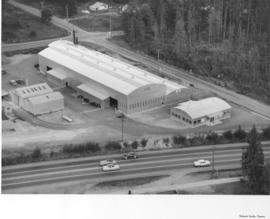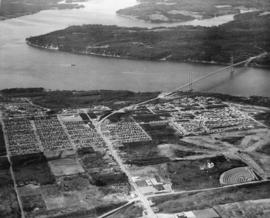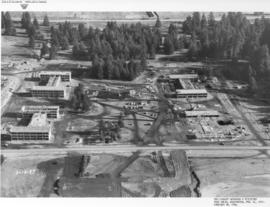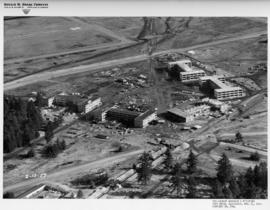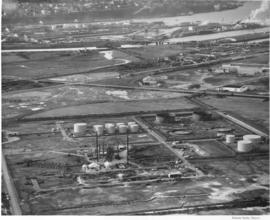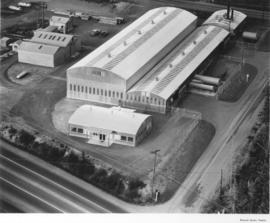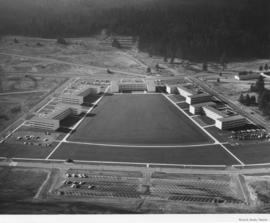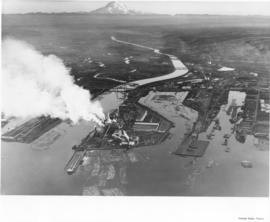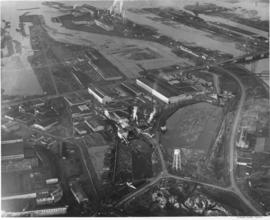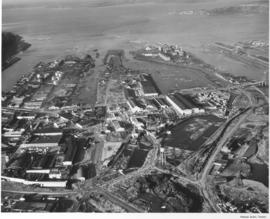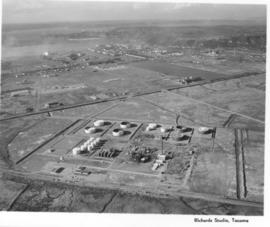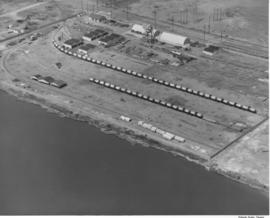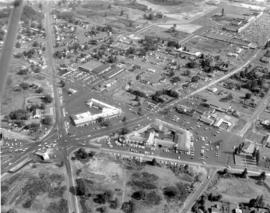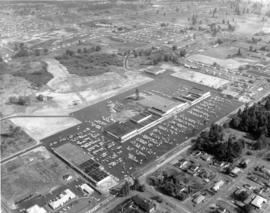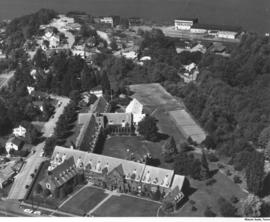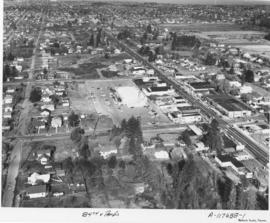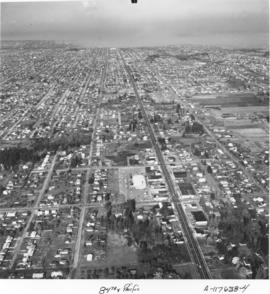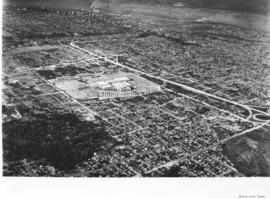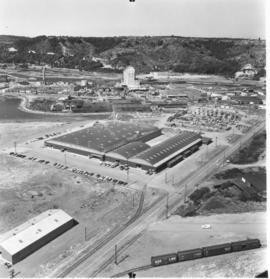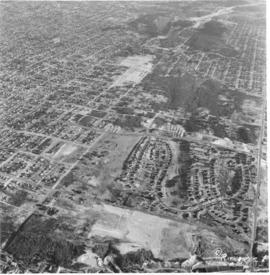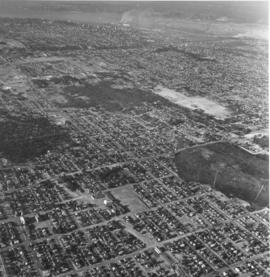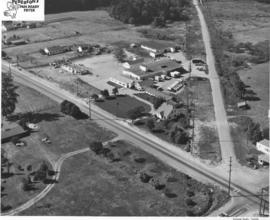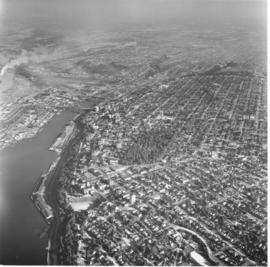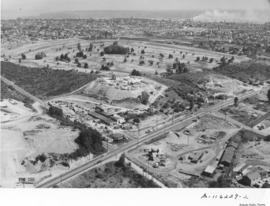ca. 1958. Copy of customer's print. An artist has placed his conceptualized drawing of the new regional shopping center, to be later called the Tacoma Mall, along with the future I-5 freeway over an aerial photograph of the South 38th St. area. Steele Street would lead into the shopping center from South 38th St. The Lincoln Heights housing development are the winding roads just off 38th St. The heavily wooded area near the Mall is presumably the Tacoma Cemetery and South Park. Allied Owners, Inc., had applied four times by August, 1958, for rezoning from a residential to regional shopping center district. They wanted to build a $20 million South Tacoma shopping headquarters, "Town Center," in an area surrounding South 43rd, South 48th & Pine Sts. and the freeway. Each time their request before the City Planning Commission had been denied. Photograph ordered by Allied Owners, Inc. (TNT 8-31-58, A-6)
Aerial photographs; Architectural drawings;
